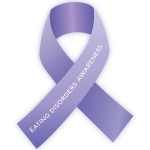
Myth: Everyone with an eating disorder is underweight.
Truth: Eating disorders effect individuals across the weight spectrum. Eating disorders do not discriminate based on body-size.
Myth: Eating disorders are just an extreme form of dieting.
Truth: Unlike dieting, eating disorders aren’t just about losing weight. Eating disorders are psychological problems with serious physical consequences.
Myth: Only girls and women have eating disorders.
Truth: Eating disorders happen in all genders. Evidence shows that trans gender and gender non-binary populations are at 2-4 times great risk of experiencing an eating disorder compared to cis-gender individuals. According to the National Eating Disorder Association, up to 1 in 3 eating disorder diagnoses in teens are male, and disordered eating behaviors in general are as common among males as they are among females. Similar to with women, risk factors for all genders include being an athlete in a sport with weight requirements, like wrestling, rowing, and gymnastics, or endurance sports like track and field, cross country, and swimming. Studies have shown that about the same amount of men suffer from binge eating disorder as women. Men with eating disorders might be focused on gaining muscle mass, so it might appear that they are simply “getting in shape.”
Myth: People choose to have an eating disorder.
Truth: No one chooses to have an eating disorder. A combination of things can start an eating disorder, and recovery involves a lot of time and support from family, friends, and eating disorder specialists such as a therapist, nutritionist, and medical provider.
Myth: People with anorexia don’t eat anything.
Truth: Although some people with anorexia eat very small quantities, some just restrict the types of foods or amounts that they allow themselves to eat. For example, they may only eat foods that are low in fat or calories, or foods that don’t have carbs in them. They might also try to hide their eating disorder and attempt to eat what would appear to be a normal amount when in front of other people.
Myth: The media is the cause for all eating disorders.
Truth: The media’s constant focus on dieting, losing weight, and being thin can definitely contribute to an unhealthy obsession with food and weight, but whether or not someone develops an eating disorder has a lot to do with other factors, too.
Myth: Someone can only have one type of eating disorder.
Truth: People with one type of eating disorder can develop symptoms of another eating disorder over time. For example, some people who restrict their food intake may go on to develop binging and/or purging behaviors.
Myth: It’s almost impossible to recover from an eating disorder.
Truth: Complete recovery is possible, but it can take a long time. Recovery can take anywhere from months to years because it requires someone to change the way they think and act about food, as well as deal with stress, trauma, abuse, and/or other psychological problems. It also takes a team of specialists to address all the issues that led to the eating disorder. Recovery can rarely be done without professional help.
Myth: Only white, upper-class girls suffer from eating disorders.
Truth: Eating disorders affect all genders, races, ages, and socioeconomic groups.
Myth: Eating disorders aren’t very serious.
Truth: Eating disorders are serious psychological conditions and can lead to very serious medical problems. Most of these medical problems are a result of malnutrition (not getting enough nutrients) or weight-loss techniques such as vomiting. There can also be medical consequences as a result of self-harm. Eating disorders must be taken seriously and require treatment before they become too severe.
Myth: Eating disorders are rare.
Truth: Lifetime prevalence of full-diagnosed eating disorders among the United States population is around 5%, with projected lifetime mean prevalence estimates increasing to 14.3% for male individuals and 19.7% for females.
Myth: You can never exercise too much.
Truth: It is possible to over-exercise, and it can actually be very dangerous. Over-exercising or “compulsive exercising” is actually a form of purging. Compulsive exercisers will make exercise their top priority, feel guilty when they don’t exercise, and use exercise as a way to either “earn” or “burn off” food and exercise an obsessive amount. They might exercise despite being injured or sick, or exercise regardless of weather conditions.
Myth: You can never eat too healthy.
Truth: When someone becomes obsessed with only eating foods they think are “pure” or “natural,” and limits their food intake to a very narrow selection of “healthy” or “clean” foods, it can lead to what is called “orthorexia” and may be considered a form of OSFED. People with orthorexia often will avoid eating “unhealthy” foods such as those with fats, preservatives, artificial ingredients, and/or processed sugar. By severely limiting the types of foods they eat, they may not be getting essential nutrients such as calcium and fats, which can lead to malnutrition.
 Young Men's Health
Young Men's Health


